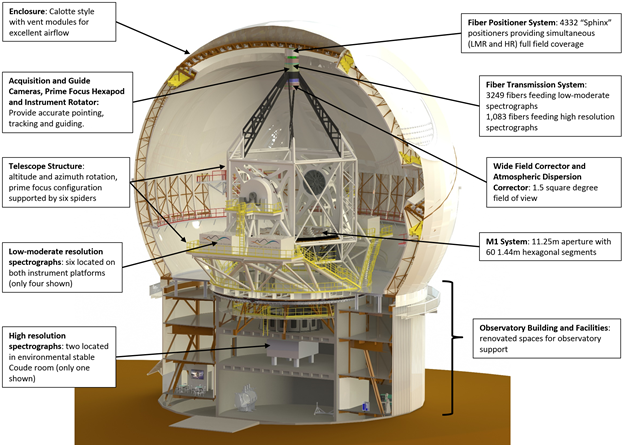MSE
Maunakea Spectroscopic Explorer (MSE) is the first of the future generation of massively multiplexed spectroscopic facilities. MSE is designed to enable transformative science, being completely dedicated to large-scale multi-object spectroscopic surveys, each studying thousands to millions of astrophysical objects. MSE uses an 11.25 m aperture telescope to feed 4,332 fibers over a wide 1.52 square degree field of view. It will have the capabilities to observe at a range of spectral resolutions, from R~3,000 to R~40,000, with all spectral resolutions available at all times and across the entire field, and an on-target observing efficiency of more than 80%. With these capabilities, MSE will be able to collect a number of spectra equivalent to an entire SDSS Legacy Survey every eight weeks, but is designed to excel at precision studies of faint astrophysical phenomena.

MSE and Texas A&M
Texas A&M University has officially joined the MSE project, after participating as an Observer institution for the past year. Texas A&M joins MSE partners Canada, France, Hawaii, Australia, China, and India, and Observers NOAO and a consortium of institutions from the UK.
Texas A&M is represented in the MSE project by Project Scientist Jennifer Marshall, Management Group representative Darren DePoy, Galaxy Formation and Evolution Science Working Group co-lead Kim-Vy Tran, and on the Science Team by faculty members Casey Papovich and Louis Strigari and Mitchell Postdoctoral Fellow Terese Hansen.
Darren DePoy says this transition comes at a great time. “Our contributions to the MSE project to date include support for Jennifer’s role as Project Scientist. We look forward to increased involvement in the technical aspects of MSE through our lab’s instrumentation activities.”
MSE Project Manager Kei Szeto especially welcomes Texas A&M, saying “it is wonderful to see the first transition of an Observer in the project into formal project participation.”
